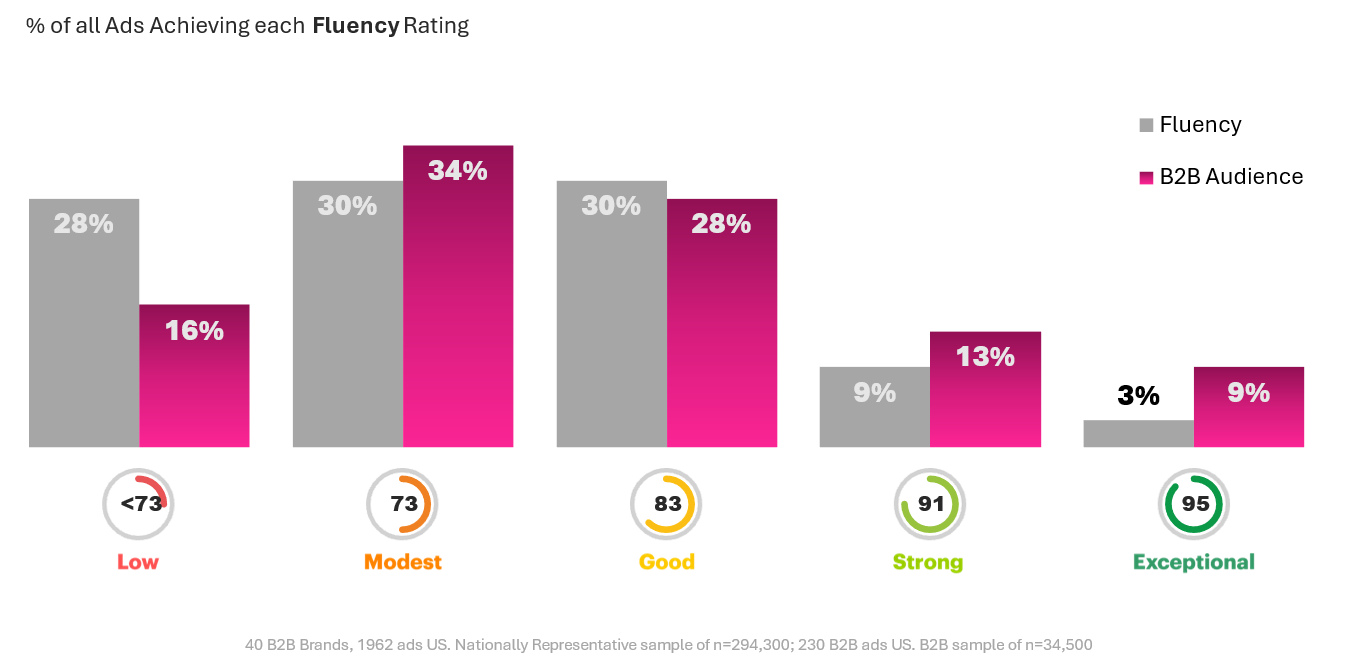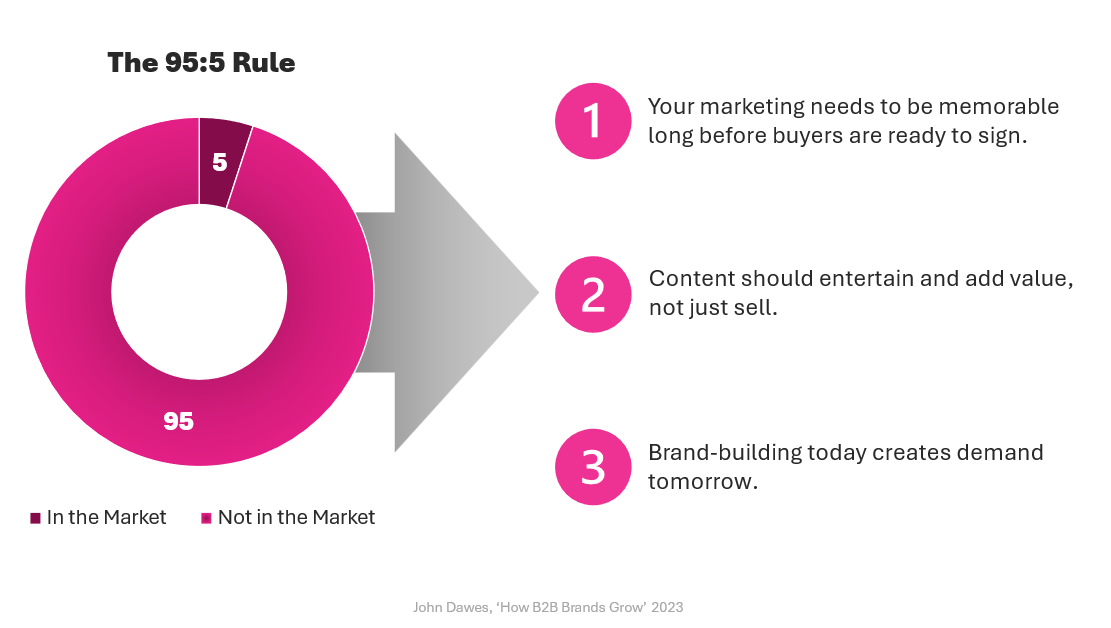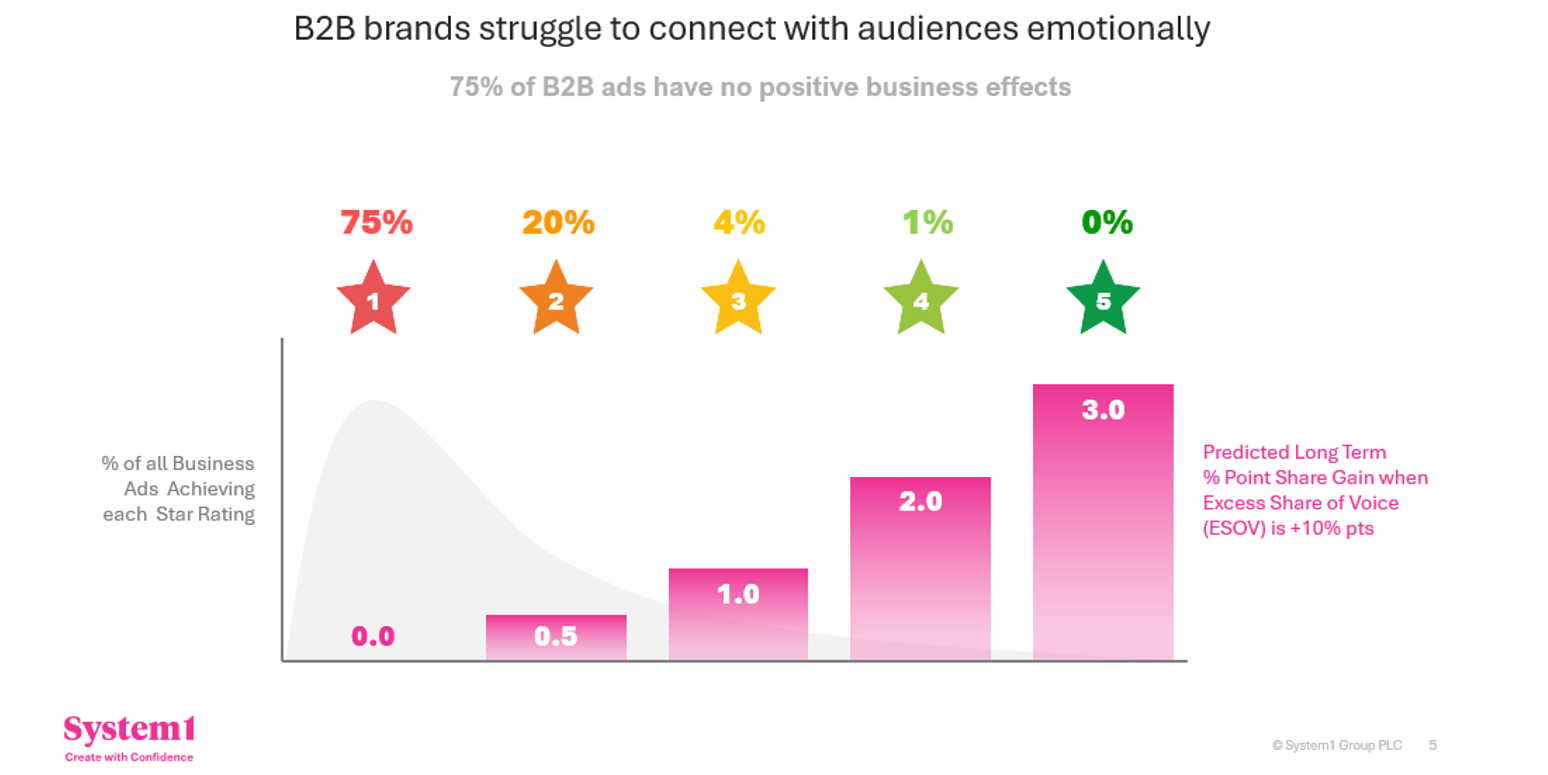Get Emotional at Work. It Might Help.
Business. The word comes from Old English “bisignis,” meaning anxiety. So, work = worry, stress, tension.
Emotion is natural in business – it’s in the name. How might we start using that emotion to our advantage? In B2B marketing, emotion isn’t a weakness. It’s par for the course and it might just be a secret weapon.
The Business of Business-to-Business
Every work week brings a to-do list full of corporate wobblies. Most of us are trying to do our best but, if we’re honest, we’re also trying not to look like we’re doing our worst.
That’s why people lean towards safe choices. As the old line goes: “Nobody ever got fired for buying IBM.” Because behind every B2B decision is a human looking for reassurance, trust and value.
And the data backs this up: 52% of factors influencing B2B buying decisions are personal. Top of the list? “I feel safe signing a contract with them.”
Safety and trust matter. When was the last time you felt trust for someone you’ve never heard of?
Mental Availability: Why Buyers Need to Think of You
Research shows that 80% of B2B buyers start with brands that come to mind first. And 90% of them end up buying from those brands.
Do the maths and you find that 72% of B2B purchase decisions are made before a buyer even opens their laptop. If people don’t think of you, they won’t buy you.
That’s why mental availability (the likelihood your brand comes to mind when it matters) is critical in B2B just as it is in B2C.
The problem? Most B2B brands simply are not remembered in ads, even by buyers who are actively considering a purchase, according to System1 data. Very few achieve strong brand fluency (high levels of brand recognition). Yet the more familiar and memorable a brand is, the more buyers trust it.
The 95:5 Principle: Most Buyers Aren’t Ready Yet
Here’s where the 95:5 principle comes in. At any given time, only 5% of your potential buyers are “in market.” The other 95%? They’re not thinking about you or your competitors.
This is an important rule of thumb. The number’s probably not exactly 95% – you can figure it out with this equation: (12 / average purchase cycle) x average length of buying window (fractions of the year).
Whatever your exact number, the bulk of your potential buyers aren’t even thinking of your category at any given moment, let alone your brand. Yes, there’s still a role for product quality, sales teams and procurement once buyers are in-market – all of those interactions build trust. But the first battle is to be remembered by the majority.
The Goal of B2B Marketing: Be the Brand Everyone Remembers
Light buyers may fill the pipeline, but big accounts fill the revenue column. In B2B, another key to growth comes from expanding those key relationships, selling more services, building more trust, becoming the obvious choice for future contracts.
But none of that happens if the right buyers never think of you in the first place. We must build mental availability within client organisations, as well as across them. Brand salience fuels both new business and account growth.
The real goal of B2B marketing is to make your brand come to mind easily, usually not now, but in the future.
Memory fades and is contextual. Awareness isn’t enough; mental availability is what really counts. The question is: how do you create marketing that people actually remember?
Today we can measure almost everything:
- ROI, which rewards low investment over long-term impact.
- Clicks, which have no link to brand recall or awareness.
- A/B test uplifts, which measure algorithms, not creativity.
- Attribution models, which punish work furthest from point of sale.
None of this tells you which campaigns will be most memorable or why.
Why Emotion Works in B2B Marketing
If people remember your work and your brand, campaigns drive growth for longer. Emotional response is one of the strongest predictors of memorability, which is why at System1 we put emotion at the heart of how we measure creative.
The commercial payback speaks for itself:
- Emotional B2B campaigns deliver 7x larger business effects than rational campaigns.
- They also deliver 2x the brand effects (LinkedIn B2B Institute, 2019).
Buyers are busy. They want safe, trusted, familiar brands. If you can make them feel something, you’re far more likely to be the brand they remember when it matters.
The bad news? Only 1% of B2B brands are tapping into the long-term power of emotional connection.
The good news? There’s plenty of opportunity to cut through the category and stand out.
What Does an Emotional and Memorable B2B Ad Look Like?
A great example of an emotional B2B ad that connects and delivers results comes from Intuit. Their animated, community-first campaign scored a 4.1 Star Rating on System1’s long-term brand-building scale and achieved 82% brand recognition (Fluency Rating).
Why did it work so well? The campaign puts on a show about how Intuit’s products help small business owners succeed. By focusing on people rather than products, it blends showmanship, storytelling and emotion: features proven to make ads more memorable and build stronger emotional connections. Importantly, it’s distinctive. It doesn’t look like all the unemotional, persuasion-led B2B ads that dominate the space.
Over to You – Let’s Create with Confidence!
Our research and consultancy team applies these proven principles to help B2B brands build mental availability and drive long-term growth.
So, ask yourself: which B2B market research brand comes to mind first?
If it’s System1, you may have already chosen.
If not, let’s have a chat.
George Webster
Client Development Director, EMEA
+44 7781 100 906
George.webster@system1group.com




